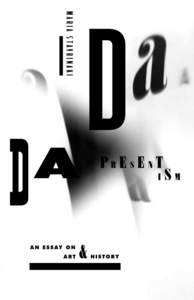
Available in April
128 pp.
from $17.95
Cloth ISBN: 9780804794244
Paper ISBN: 9780804798129
Dada is often celebrated for its strategies of shock and opposition, but in Dada Presentism, Maria Stavrinaki provides a new picture of Dada art and writings as a lucid reflection on history and the role of art within it. The original (Berlin-based) Dadaists' acute historical consciousness and their modern experience of time, she contends, anticipated the formulations of major historians such as Reinhart Koselleck and, more recently, François Hartog. The book explores Dada temporalities and concepts of history in works of art, artistic discourse, and in the photographs of the Berlin Dada movement. These photographs—including the famous one of the First International Dada Fair—are presented not as simple, transparent documents, but as formal deployments conforming to a very concrete theory of history. This approach allows Stavrinaki to link Dada to more contemporary artistic movements and practices interested in history and the archive. At the same time, she investigates what seems to be a real oxymoron of the movement: its simultaneous claim to the ephemeral and its compulsive writing of its own history. In this way, Dada Presentism also interrogates the limits between history and fiction.
About the author
Maria Stavrinaki is Associate Professor of Art History and Theory at the Pantheon-Sorbonne University.
"With the potential to nudge Dada studies in another direction altogether, this book prizes apart the philosophical and political dimensions of time and history precisely at the moment where they come radically into question. Offering a rich perspective from which to assess not only Dada, but also other modernist enterprises, it is a brisk, revivifying breath of fresh air."
—Sabine Kriebel, University College, Cork
"Elegantly written, thorough, and unlike any other study of Dada, this essay manages to succinctly point out the uniqueness and importance of the movement. It will become a key text in twentieth-century history of art."
—Rudolf Kuenzli, The University of Iowa
 PRESS
PRESS










